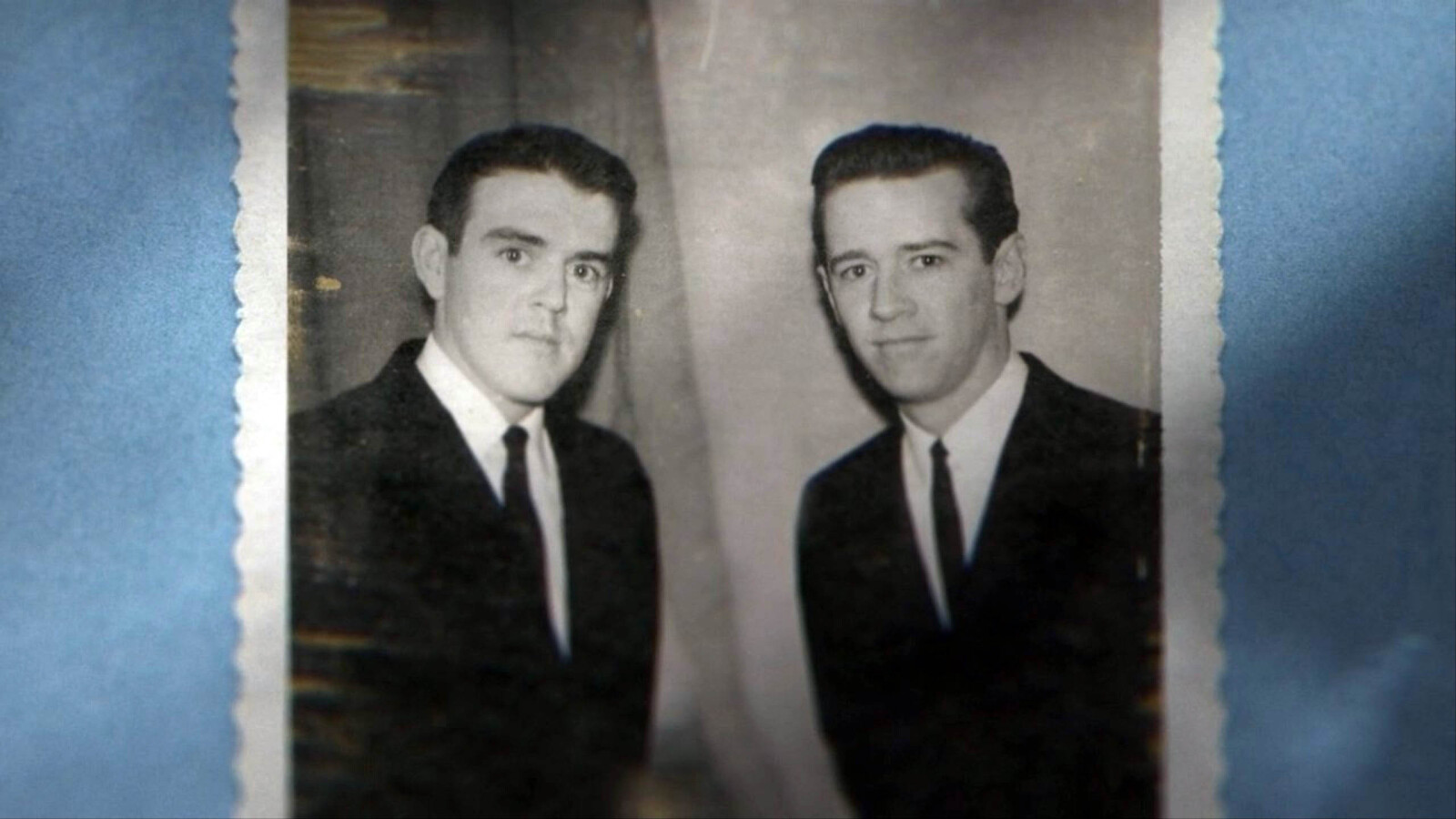5 Things We Learned From George Carlin's American Dream

OK, hotshot, think you know a lot about comedy history? We’re guessing you still might pick up a nugget or two from watching Judd Apatow and Michael Bonfiglio’s exhaustive new documentary, George Carlin’s American Dream. Here are five things even comedy nerds might not know about Carlin, our foremost contrarian counterculture clown.
He started as a disk jockey.
Carlin’s road to comedy started on the radio, yukking it up on KJOE in Shreveport, Louisiana, while he toiled in the U.S. Air Force.

HBO
Not surprisingly, Carlin received his discharge for generally disrespecting any and all authority (to say the least -- he earned himself three court-martials). Next stop, KXOL in Fort Worth, Texas, where he met Jack Burns, at the time serving as George’s nighttime newsman. Their radio rapport was riotous, so they decided to become a comedy duo.

HBO
They moved to LA and began hitting the clubs. Lenny Bruce himself saw them at a coffee house and recommended them for representation, getting the team their first agents. While Carlin and Burns did record an album together, they broke up after only two years -- Burns wanted to go to Second City and Carlin wanted to work as a single. Carlin’s stand-up career was underway.
He got arrested at a comedy club. But not for what you think.
“It was the night when Lenny Bruce was arrested for obscenity,” says comedian Paul Provenza.
Carlin was in the audience, laughing it up with the normals. At the behest of local Catholic authorities, the police showed up to arrest Bruce for indecent material, then went around the club asking everyone for their ID.
ID? Seriously? George said, “I don’t believe in ID.”
So the young comic got himself arrested as well and thrown into the back of a police car -- the same car that held Lenny Bruce. George told Lenny that he had refused to show his ID in solidarity. Lenny’s response?
“Schmuck!”
(Carlin would go on to get arrested for indecent comedy of his own, getting nabbed on obscenity charges in Milwaukee in 1972 for performing his Seven Dirty Words routine at the city’s Summerfest.)
Young Carlin and Richard Pryor appeared on the same TV show.

HBO
In 1966, George and his young family moved to Hollywood. Soon after, he landed a gig on a summer replacement TV series, The Kraft Summer Music Hall. He was the show’s resident comic, telling hokey jokes in a squaresville sweater.
But the show gave him the chance to trade gags with one of the short-lived show’s special guests -- Richard Pryor, also years away from his counterculture success.
The two did a bit about the goofy ways that different audience members laugh. Not edgy or provocative in the slightest -- but still funny nonetheless and a sneak preview of comedy greatness to come.
He went on a trip that changed his comedy forever.
“At some point, he’s watching the culture shift,” says comic W. Kamau Bell. “And he’s seeing the people he’s performing for. And he’s in a suit and tie and he’s like ‘I want to be over there, where the culture’s shifting, where things are happening.’”
His material was inching in that direction, but “what happened that changed everything,” says Carlin, “was acid.”
It doesn’t sound like a fun trip. His daughter Kelly describes Carlin tripping in his bedroom, smashing his fist into pictures of his old comedy persona until his hands were bleeding from the broken glass.
The experience convinced him to take his comedy in an entirely different direction, trying out a whole new persona one night at a Playboy Club in Lake Geneva, Wisconsin. Many in the audience walked out. The bad vibes continued at the Frontier Casino in Vegas, where he got canned from a $12,500 a week gig for saying the word “sh!t."

Amazon
A beard now signaled his transformation from the Establishment to the Resistance, and he’d lead off his next album with this joke: “I got fired last year in Las Vegas from the Frontier Hotel for saying 'sh!t,' in a town where the big game is called 'crap.'”
Sam Kinison inspired a new phase of his career.
An article lamenting the end of the 1970s advised readers to say goodbye to wide lapels, say goodbye to disco, and say goodbye to George Carlin. Responding to that and other criticisms, he resolved: “I’m going to make these people pay by getting better and learning how to really be a f***ing artist.”
Then there was Sam Kinison exploding onto the scene, full of energy and anger. “Part of Sam Kinison inspired George Carlin,” says comic Patton Oswalt, “but part of him scared him a little bit. But like any true artist, if something scares you, you run towards it”

HBO
Carlin admitted to admiring Kinison’s talents and ideas -- and to his own competitiveness. It inspired a new phase of his career into the 1990s, one marked by his own indignation at the world around him -- “I want to raise my level to where I’m not lost in his dust.”
For more ComedyNerd, be sure to check out:
5 Real-Life Comics Who Inspired Hacks and Mrs. Maisel
15 Matt Berry Moments We Just Had To Share
8 Comedians Who Started As Pages Or Interns
For ComedyNerd exclusive content and more, subscribe to our fancy newsletter:
Top image: HBO
